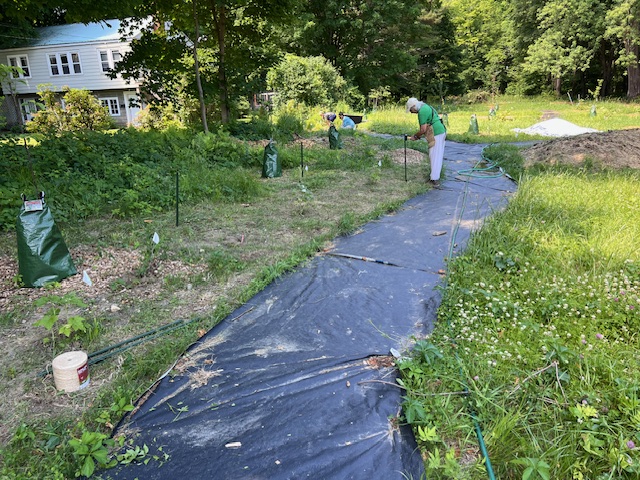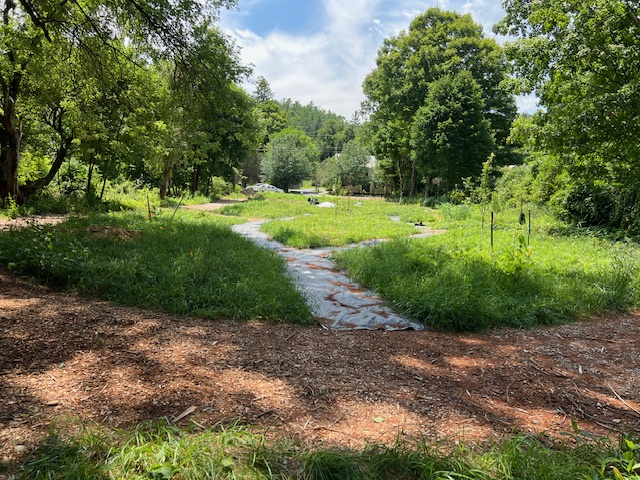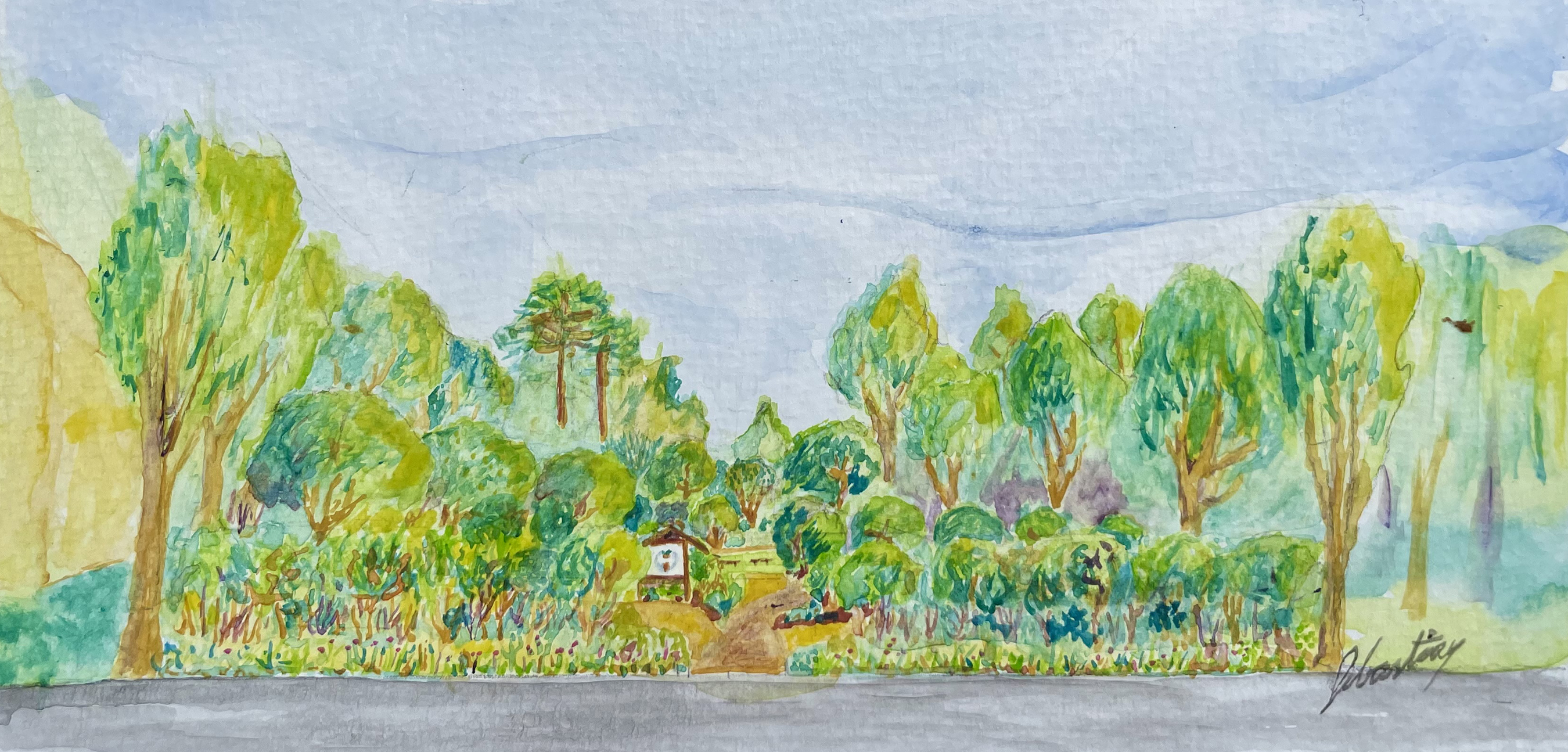
A Food Forest Blossoms on Western Ave.
Edible Brattleboro has partnered with the Town of Brattleboro to create a public food forest on a town-owned lot (0.63 acre) centrally located in West Brattleboro Village. 805 Western Ave. is a vacant, town-owned parcel that borders the Whetstone Brook. There are restrictions on this parcel that prevent development of housing or other structures, due to the fact that it was a Floodplain Buyout after Tropical Storm Irene. The Town wishes to see this project succeed, as it helps achieve a beneficial community re-use of an otherwise undevelopable parcel.
For the last two years, Edible Brattleboro has been coordinating and planning for this project, in partnership with the Planning Services Department and Sustainability Coordinator. They have consulted with the Tree Warden and Tree Advisory Board, the Zoning Administrator, Department of Public Works, and others to design a project that fits within the constraints of the parcel and the needs of the Town. The site borders the Whetstone Brook and is near three low-income housing developments and an elementary school.
Edible Brattleboro is an established community nonprofit with the overall mission of growing food, everywhere, for everyone. They have established many public help-yourself gardens and a free produce stand, in addition to leading programs that educate people about the interconnectedness of health, food, soil, and community. They have also obtained a large grant that will support them in launching this project. Details of the Food Forest Project can be found at their website.

The final plans for the site will include a kiosk located close to the sidewalk along Western Ave. The kiosk will include a site map and identification of plants and information about ecosystem regeneration techniques and the importance of urban forestry in heat mitigation, fostering biodiversity, and enhancing the overall well-being of the community. Signage will also be placed in the beds to identify plants and harvest information.
EB will plant a pollinator garden along the sidewalk with a pathway entrance to the rest of the site. The interior section of the lot will include a mix of annual and perennial vegetable garden beds with pathways weaving around the beds. A small seating area will also be included, using benches or cut logs for seats. Along the western and eastern borders EB will plant berry bushes and fruit/nut tree orchards.
The riparian buffer zone will be left undeveloped except for a pathway and possibly another seating area and a table where visitors may enjoy the sounds of the brook. Pathways will be mulched with wood chips and white clover may be planted in turf areas to reduce the need for mowing.
Improving the soil and increasing biodiversity will help improve the soil carbon sponge that retains water on site, thus mitigating the effects of flooding both up and downstream. The intention is for the public to access the food forest to enjoy being in nature, learn about native plants, and harvest food. Specific details and arrangements of the project and its constraints, were detailed in a Memorandum of Understanding, passed by the Selectboard in early 2024 and signed by the Town and Edible Brattleboro.

This project helps advance numerous goals and policies of the Town, as articulated in the Town Plan and elsewhere, including but not limited to:
— Preserving the land and other environmental resources critical to the long-term success of the local agricultural economy
— Supporting community-led initiatives to strengthen the food system, including the development of necessary infrastructure, such as dry and cold storage, commercial food-processing kitchens, distribution outlets, slaughterhouses, and community gardens
— Encouraging pride and sense of ownership of parks and mini-parks through facilities that are well maintained, landscaped, and programmed
— Encouraging preservation and restoration of wildlife corridors, wetlands, and riparian habitats
— Promoting, sponsoring, and organizing opportunities that connect residents to the natural environment
The Town looks forward to seeing a productive and beneficial reuse of this currently vacant and unused parcel and has faith in the ability of Edible Brattleboro to pursue this project. Thus far, Edible Brattleboro has planted more than 20 fruit and nut trees that will be providing food for many years to come. They have also planted more than 50 berry bushes and other supporting understory shrubs and completed an access roadway. Work continues to finish foot paths, clear the vines and other unwanted plants along the edges of the lot, and create mixed annual and perennial beds as well as a teaching space.
It takes a community to develop a community food forest. This project seeks your support in whatever ways you can help. Consider becoming a member of the Food Forest Volunteer Corps – a group of volunteers who are especially interested and would like to receive updates related to the food forest project.

Images in this article are courtesy Edible Brattleboro. Read other articles about Brattleboro's sustainability efforts here or visit the sustainability page.

